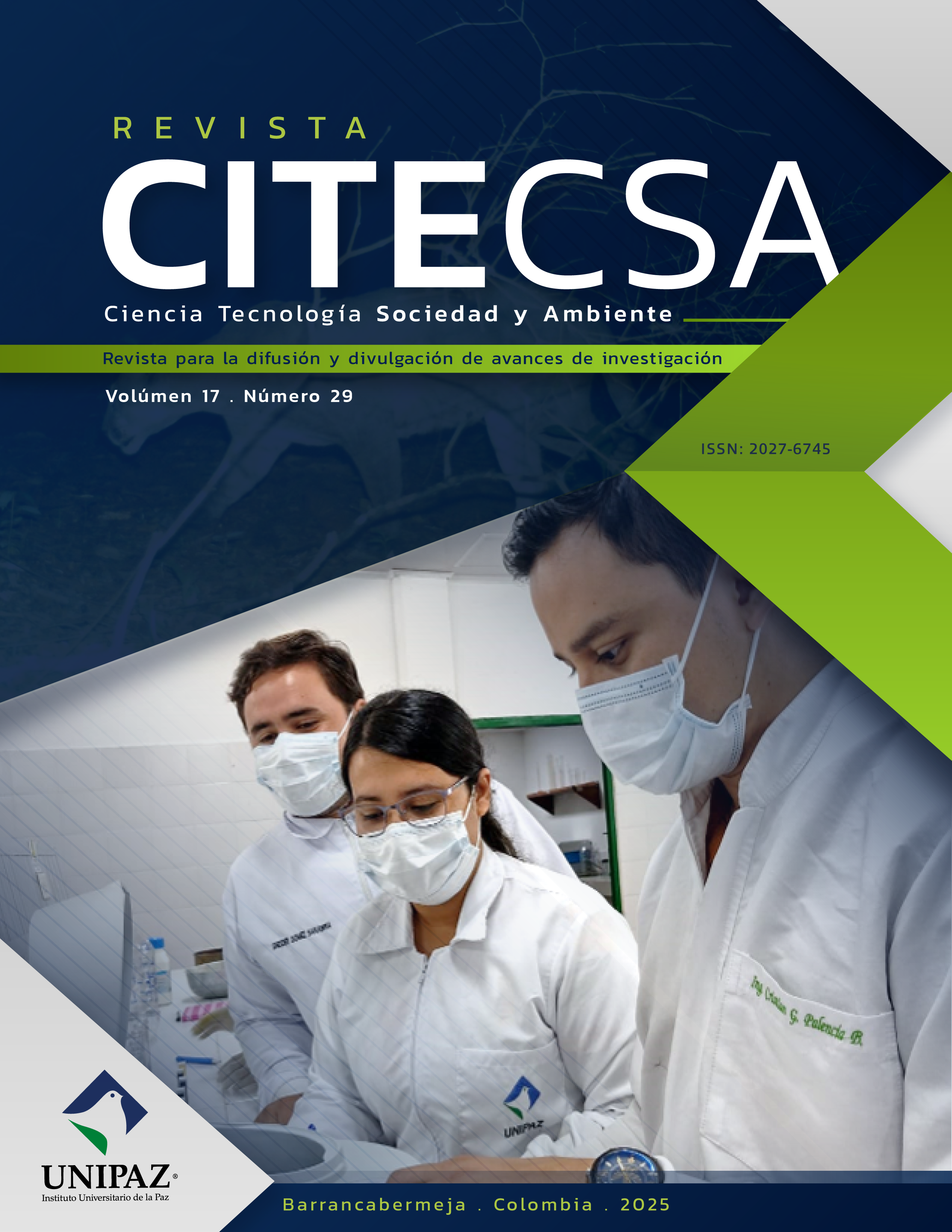Evaluation of Sesame Production Under Different Weed Control Strategies
Keywords:
Sesame; weed control; Agricultural production; plastic covering; seed quality; granulometric curve.Abstract
Sesame seeds (Sesamum indicum L.) are an oilseed plant with high nutritional value and commercial potential, especially in tropical regions such as the Colombian Middle Magdalena. This study evaluated the effect of three weed control strategies on sesame seed production and quality. Three treatments were implemented: black plastic cover (T1), organic cover by manual weeding (T2) and cleaning without cover (T3). The variables evaluated included the seed mass per plant, as well as its composition (moisture, organic matter and ash), granulometry and germination percentage. The results indicated that the plastic cover treatment (T1) generated an average production of 1,646 kg/ha. The germination percentage was higher than 98.6% in all treatments. Regarding the composition, the average values were similar between the treatments: moisture (5.14%), organic matter (90.05%) and ash (4.81%), which suggests that these variables were not affected by the control strategies. However, the granulometric analysis showed that the mean diameter of the seeds was greater in the treatment with plastic cover, exceeding by 6% and 18% compared to treatments 2 and 3, respectively. These results suggest that the use of plastic cover not only favors crop yield, but also improves the physical quality of the seeds. It is concluded that plastic cover is an effective strategy for the management of weeds in sesame cultivation under the conditions of the Middle Magdalena.
References
Babu, A., Raj, S., & Unnikrishnan, D. (2023). Sesame (Sesamum indicum L.): A potential allelopathic crop - A review. Environment and Ecology. https://doi.org/10.60151/envec/ttne8406
Chandaka, D., Roja, M., & Reddy, M. (2020). A review on nutrient management studies on sesame (Sesamum indicum). Crop Research, 55, 172-181. https://doi.org/10.31830/2454-1761.2020.026
Garnica Montaña, J. A., Rodríguez Barragán, S. M., Romero Rojas, A., & Ramírez Gómez, L. A. (2020). Caracterización morfológica de 160 accesiones de ajonjolí (Sesamum indicum L.) del banco de germoplasma de Colombia. Ciencia y Agricultura, 17(2), 1–14. https://doi.org/10.19053/01228420.v17.n3.2020.11618
González, S., León, A., Cova, J., & Martínez, A. (2018). Caracterización morfológica y física de semillas de sésamo (Sesamum indicum L.) negro para uso agroindustrial. Chilean Journal of Agricultural Research, 78(4), 595–602. https://doi.org/10.4067/S0718-58392018000400495
Mili, A., Das, S., Nandakumar, K., & Lobo, R. (2021). A comprehensive review on Sesamum indicum L.: Botanical, ethnopharmacological, phytochemical, and pharmacological aspects. Journal of Ethnopharmacology, 114503. https://doi.org/10.1016/j.jep.2021.114503
Mncwangi, N., Chen, W., Vermaak, I., Viljoen, A., & Gericke, N. (2012). Devil's Claw - A review of the ethnobotany, phytochemistry, and biological activity of Harpagophytum procumbens. Journal of Ethnopharmacology, 143(3), 755-771. https://doi.org/10.1016/j.jep.2012.08.013
Organización Internacional de Normalización. (2000). Semillas oleaginosas – Determinación del contenido de humedad y materias volátiles (ISO 665:2000). https://www.iso.org/standard/31140.html
Organización Internacional de Normalización. (2007). Cereales, legumbres y productos derivados – Determinación del contenido de cenizas por incineración (ISO 2171:2007). https://www.iso.org/standard/38145.html
Pathak, K., Rahman, S., Bhagawati, S., & Gogoi, B. (2017). Sesame (Sesamum indicum L.), an underexploited oil seed crop: Current status, features and importance – A review. Agricultural Reviews, 38, 223-227. https://doi.org/10.18805/AG.V38I03.8982
Rashed, K. (2022). Phytochemical and biological effects of Sesamum indicum L. - A review. Plantae Scientia. https://doi.org/10.32439/ps.v5i1.8-11
Ravindran, S. (2015). Health benefits of Sesamum indicum - A short review. Asian Journal of Pharmaceutical and Clinical Research, 8, 1-3. Recuperado de: https://www.researchgate.net/publication/284736338_Health_benefits_of_sesamum_indicum_A_short_review
Seid, F., & Mehari, B. (2022). Elemental and proximate compositions of sesame seeds and the underlying soil from Tsegede, Ethiopia. International Journal of Analytical Chemistry, 2022, Article 1083196. https://doi.org/10.1155/2022/1083196
Shah, H., Tikoo, A., & Khan, S. (2024). Phytochemical and ethnopharmacological review of Till Safeed (Sesamum indicum Linn.). Journal of Drug Delivery and Therapeutics. https://doi.org/10.22270/jddt.v14i9.6803
Sharma, E., Shah, T., & Khan, F. (2014). A review enlightening genetic divergence in Sesamum indicum based on morphological and molecular studies. 7, 1-9. Recuperado de: https://api.semanticscholar.org/CorpusID:130271996
Solé-Bundó, M., Cucina, M., Folch, M., Tàpias, J., Gigliotti, G., Garfí, M., & Ferrer, I. (2017). Assessing the agricultural reuse of the digestate from microalgae anaerobic digestion and co-digestion with sewage sludge. Science of the Total Environment, 586, 1–9. https://doi.org/10.1016/j.scitotenv.2017.02.006
Downloads
Published
How to Cite
Issue
Section
License
Copyright (c) 2025 CITECSA

This work is licensed under a Creative Commons Attribution-NonCommercial-ShareAlike 3.0 Unported License.

Este obra está bajo una licencia de Creative Commons Reconocimiento-NoComercial-CompartirIgual 3.0 Unported.

